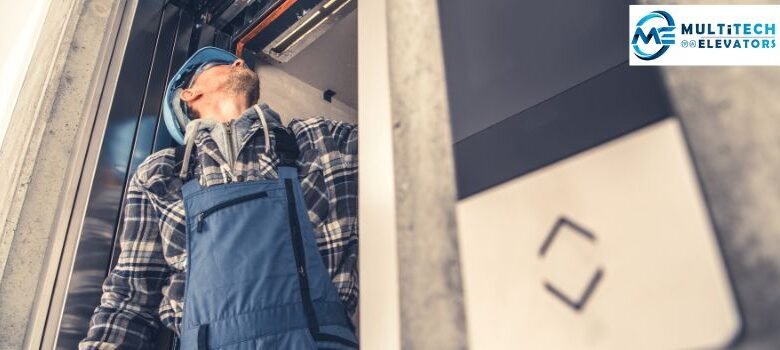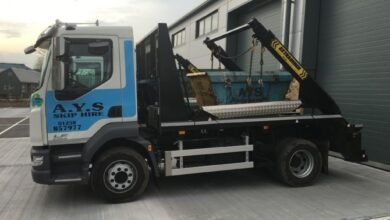
As the world moves toward greater accessibility and inclusivity, the installation of handicap elevators has become a crucial component in both commercial and residential buildings. This development not only addresses the needs of people with disabilities but also ensures compliance with various regulations and standards. In 2024, the process of installing a handicap elevator involves numerous considerations, from legal requirements to technological advancements. This article will explore the essential aspects of handicap elevator installation, including the importance of accessibility, the types of elevators available, key regulations, the installation process, and the associated costs.
1. The Importance of Handicap Elevators
Handicap elevators, also known as accessibility lifts, are designed to assist people with mobility impairments, making it easier for them to access different floors of a building. The need for such elevators has grown with the increasing awareness of the importance of accessibility in public spaces and private residences.
Inclusion and equality are at the forefront of modern societal values, and providing access to all individuals, regardless of their physical abilities, is essential. Handicap elevators play a vital role in enabling independence and enhancing the quality of life for people with disabilities. They also benefit the elderly and those recovering from injuries, making buildings more user-friendly for a diverse range of occupants.
2. Types of Handicap Elevators
Several types of handicap elevators are available, each designed to meet specific needs and building configurations. The main types include:
a. Vertical Platform Lifts (VPLs)
Vertical platform lifts are one of the most common types of handicap elevators. They are often used in homes, schools, and public buildings to provide access to different levels. These lifts operate vertically, similar to a traditional elevator, and can accommodate wheelchairs and other mobility devices.
b. Inclined Platform Lifts
Inclined platform lifts are installed along stairways and are ideal for buildings where space is limited. These lifts allow wheelchair users to travel up and down stairs without leaving their mobility device. Inclined platform lifts are often seen in historical buildings or other structures where a traditional elevator is not feasible.
c. Residential Elevators
Residential elevators are smaller than commercial elevators and are designed specifically for homes. They provide a more aesthetically pleasing option for homeowners who need to accommodate family members with mobility issues. These elevators can be customized to match the home’s interior design and can be installed in new or existing structures.
d. Commercial Elevators
In larger buildings such as offices, hospitals, and shopping centers, commercial elevators are essential for providing access to multiple floors. These elevators are designed to handle higher traffic volumes and are equipped with features such as larger cabins and higher weight capacities to accommodate wheelchairs and scooters.
e. Portable Lifts
Portable lifts are a temporary solution for accessibility needs. These lifts can be moved and installed in different locations, making them ideal for events or temporary use in buildings that are not equipped with permanent elevators.
3. Key Regulations and Standards
When installing a handicap elevator, adherence to regulations and standards is paramount. In 2024, these regulations are governed by both national and local authorities to ensure that elevators meet safety and accessibility requirements.
a. Americans with Disabilities Act (ADA)
The ADA sets the minimum requirements for accessibility in public spaces, including the installation of elevators. Buildings that serve the public must comply with ADA standards, which dictate the size, operation, and features of handicap elevators. For example, the ADA requires that elevators have a minimum cabin size of 36 inches by 48 inches, with doorways that are at least 32 inches wide.
b. International Building Code (IBC)
The IBC provides guidelines for building construction, including the installation of elevators. The code covers various aspects such as fire safety, structural integrity, and accessibility. Handicap elevators must comply with IBC standards to ensure that they are safe and functional.
c. Local Building Codes
In addition to national regulations, local building codes may impose additional requirements for handicap elevator installation. These codes vary by location and can affect factors such as the size, placement, and features of the elevator. It’s essential to consult with local authorities to ensure compliance with all applicable regulations.
d. Safety Standards
Safety is a top priority in elevator installation, and various standards exist to ensure that handicap elevators are safe to use. These include the ASME A17.1/CSA B44 Safety Code for Elevators and Escalators, which outlines the safety requirements for elevator design, construction, and maintenance.
4. The Installation Process
Installing a handicap elevator is a complex process that requires careful planning and coordination. The following steps outline the typical process for installing a handicap elevator in 2024:
a. Assessment and Planning
The first step in the installation process is to assess the building and determine the most suitable location for the elevator. This involves evaluating the space, accessibility needs, and compliance with regulations. A professional elevator contractor will work with the building owner to develop a plan that meets these requirements.
b. Design and Customization
Once the plan is in place, the design phase begins. Handicap elevators can be customized to suit the building’s aesthetics and the specific needs of the occupants. This may involve selecting materials, finishes, and features such as handrails, lighting, and controls. The design must also comply with ADA and local building codes.
c. Permitting and Approvals
Before installation can begin, the necessary permits and approvals must be obtained from local authorities. This ensures that the installation complies with all applicable regulations and standards. The permitting process may involve submitting detailed plans and undergoing inspections.
d. Construction and Installation
The construction phase involves preparing the site for the elevator installation. This may include creating a shaft, reinforcing the structure, and installing electrical and mechanical systems. Once the site is ready, the elevator components are installed, including the cabin, motor, and control system.
e. Testing and Inspection
After installation, the elevator must undergo rigorous testing to ensure that it operates safely and efficiently. This includes testing the controls, emergency systems, and safety features. An inspection by a qualified professional is required before the elevator can be put into service.
f. Training and Maintenance
Once the elevator is operational, training is provided to the building occupants on how to use the elevator safely. Regular maintenance is also essential to keep the elevator in good working condition. This may involve routine inspections, repairs, and upgrades to ensure compliance with safety standards.
5. Costs Associated with Handicap Elevator Installation
The cost of installing a handicap elevator can vary widely depending on several factors, including the type of elevator, the complexity of the installation, and the location of the building. In 2024, the average cost of a handicap elevator installation ranges from $10,000 to $50,000, with residential elevators typically being less expensive than commercial ones.
a. Cost Breakdown
- Vertical Platform Lifts: $10,000 to $25,000
- Inclined Platform Lifts: $3,000 to $15,000
- Residential Elevators: $20,000 to $40,000
- Commercial Elevators: $30,000 to $50,000 or more
b. Additional Costs
In addition to the base cost of the elevator, there may be additional expenses for customization, permits, and site preparation. Maintenance and operating costs should also be considered, as regular servicing is required to keep the elevator in good working order.
6. The Future of Handicap Elevators
As technology continues to evolve, the future of handicap elevators looks promising. Innovations in materials, design, and automation are making elevators more efficient, environmentally friendly, and user-friendly. For example, smart elevators equipped with touchless controls and AI-based systems are becoming more common, offering enhanced safety and convenience.
Sustainability is also a growing trend in the elevator industry, with manufacturers focusing on energy-efficient designs and eco-friendly materials. The integration of renewable energy sources, such as solar power, is another exciting development that could reduce the environmental impact of elevator installations.
Conclusion
The installation of handicap elevators in 2024 is more than just a legal requirement; it is a step toward creating a more inclusive and accessible society. By understanding the different types of elevators available, the regulations governing their installation, and the costs involved, building owners and developers can make informed decisions that benefit everyone. Learn More

